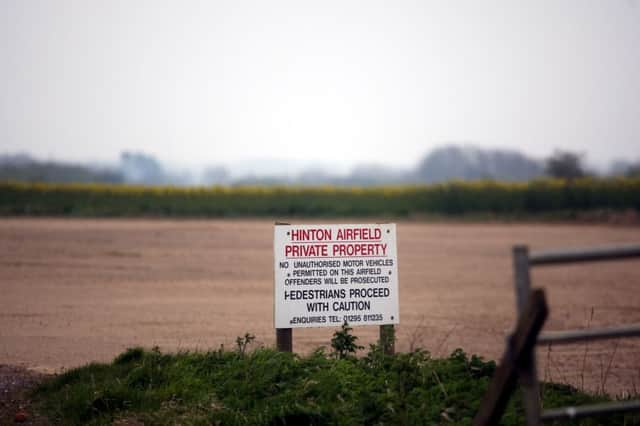Pilot who died in light aircraft crash in Northamptonshire only had three hours' solo flying experience


Adam Abraham, aged 39, from south-west London died in the crash at Hinton-in-the-Hedges airfield, near Brackley, on September 4 last year.
A report by the Air Accidents Investigation Branch said the pilot got into difficulty shortly after an “bounced” landing.
Advertisement
Hide AdAdvertisement
Hide AdThe report states Mr Abraham, who only started flying lessons three months earlier, applied power to go around and attempt to land again.
However, the Cessna plane stalled and entered a spin after the aircraft adopted a “steep nose-up altitude”.
Accident investigators said there was “insufficient height” for the pilot to recover and the aircraft struck the ground in a “steep nose-down” altitude.
The conclusion of the report states: “Following the bounced landing, the student pilot applied power and the aircraft lifted off and began climbing gently.
Advertisement
Hide AdAdvertisement
Hide Ad“For reasons that could not be determined, the pilot extended the flaps but did not control the aircraft’s natural tendency to pitch up as a consequence. “The airspeed reduced and the aircraft stalled and began to rotate to the left, probably because it was entering a spin. There was insufficient height to recover and the aircraft struck the ground in a steep nose-down attitude.”
Mr Abraham was undergoing training for a Private Pilot’s Licence (PPL) and, during the morning of the accident, had flown six glide approaches with an instructor.
The student pilot began his flying on June 6, 2015 and first flew solo on August 17, 2015 after 22 hours of instruction. Before the accident flight, the student had flown 27 hours with an instructor and three hours solo.
The pilot had been taught low speed handling, with and without flaps extended, earlier in the PPL syllabus as a prelude to being taught about stalling.
Advertisement
Hide AdAdvertisement
Hide AdHowever, his training to handle the aircraft with flaps set to 40° had been limited to a demonstration in which he was told that, when applying power, the aircraft attitude was to be held steady and flaps raised to 20° in order to prevent the speed from decreasing.
He had been taught not to use 40° of flap to steepen the approach flightpath angle if the aircraft appeared to be high, and his experience of going around had been with 20° or 30° of flap, not 40°.